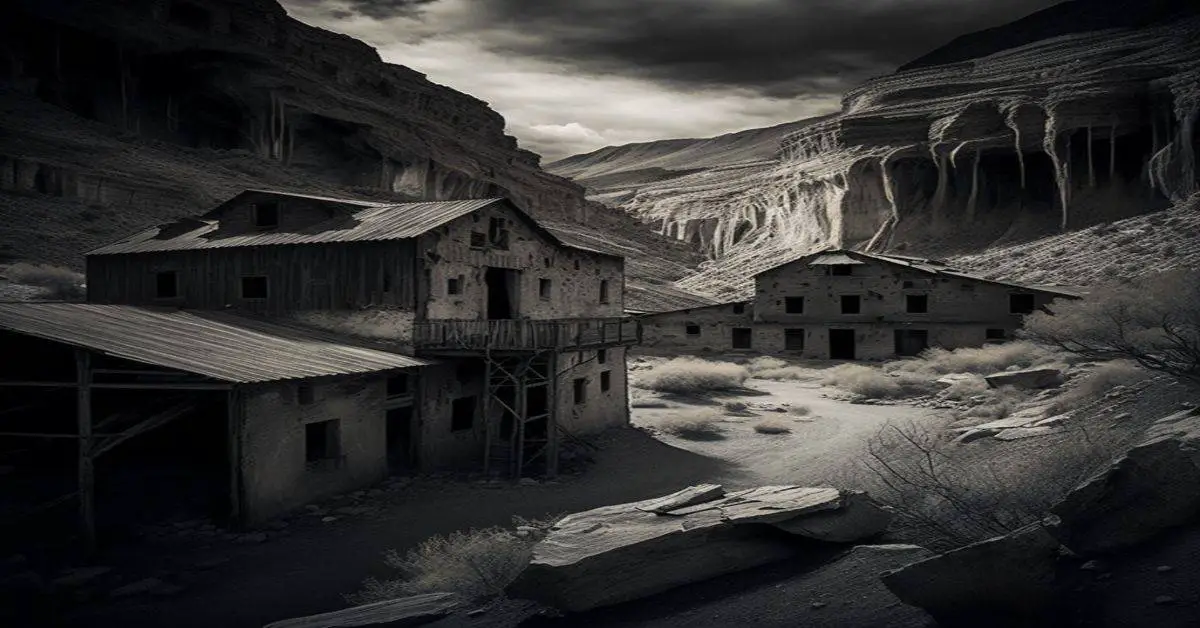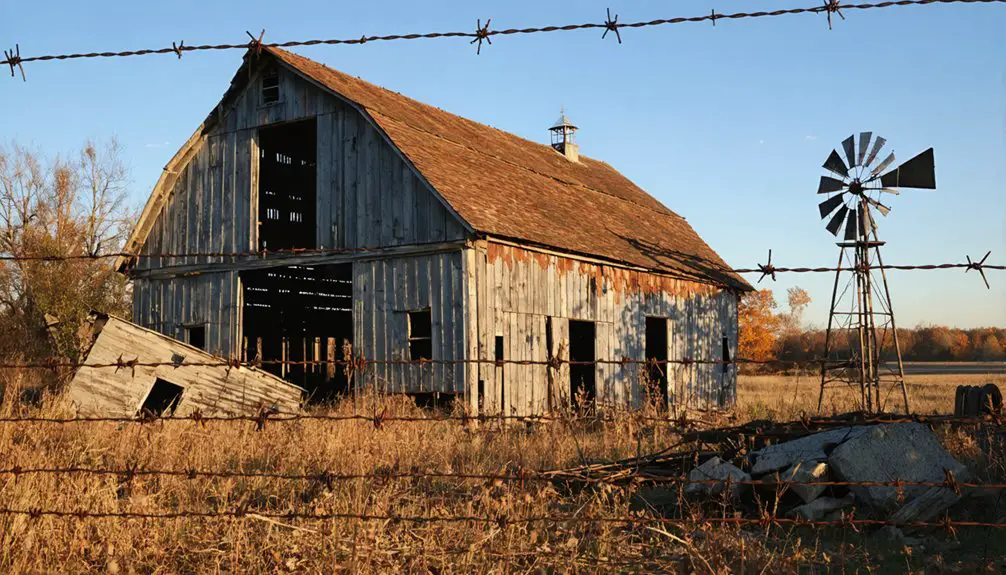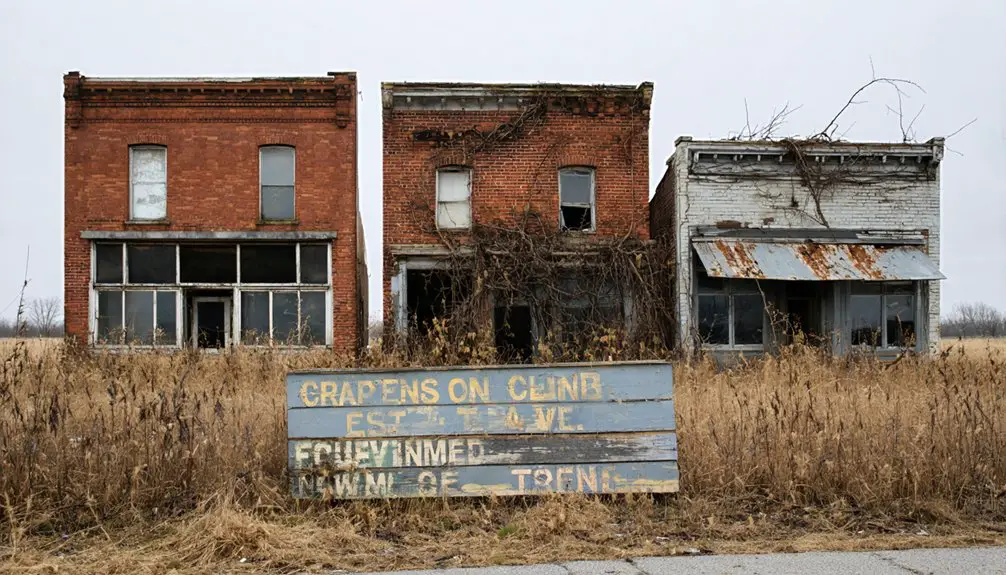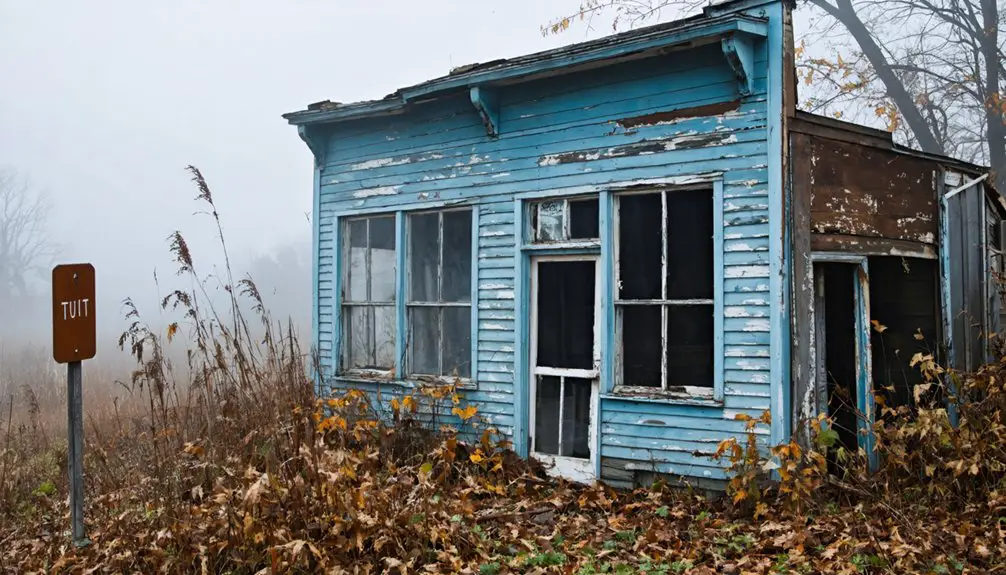Ohio has a rich history. French fur traders initially occupied its territory; however, after the French and Indian war in 1754, it became a part of the British colonies.
After the American Revolution, its territories became a part of the North-Western United States. Ohio is the 17th state to join the union, the first state adjoined from the northwest territory in 1803.
There are 25 ghost towns in Ohio. Boston Mills is the most popular one known to be the “creepiest” in Ohio. It has been abandoned since the 1970s and is said to be haunted.
Ohio has plenty of historical events that tie the earliest record of the United States with today’s top places to visit; with over 70 mining towns that flourished in the early 20th century, ghost town hunting has rapidly become a favorite pastime for many. Let’s look at the most interesting ghost towns in the state and see what interesting facts we can uncover.
Boston Mills (Hell Town)
Boston Mills is an abandoned town in the northern part of Summit County, which they call Boston Township. Boston Township is made up of two cities: Peninsula and Boston Heights. But back in the day, Boston Mills was an up-and-coming community; it was settled in 1806 and is the oldest village in the county.
The first mill was built in the 1820s, and after the Ohio & Erie Canal, many more mills were built, including a paper mill. Later, in 1880, a railroad station was constructed. The station was named “Boston Mill” in honor of the paper mill.
In the early 1970’s President, Ford signed legislation that allowed the government to purchase lands from private owners to create national parks. The government had the right to claim these lands for purchase. The U.S. Government ordered the people who lived in Boston Mills to evacuate the area to establish a new National Park.
Homes, streets, and buildings were quickly emptied. Legend has it that the area was evacuated for alternate reasons, like toxins in the soil. The Cuyahoga Valley National Park has taken over much of the town. Some buildings have been remodeled, but to this day, what is left of the city remains uninhabited.
Moonville, OH
Moonville is a coal mine, and railroad town abandoned when the railroad shut down. Moonville was settled in the early 1800s in Brown Township, Vinton County, Ohio – In Zaleski State Forest, along the old railroad path that crosses Hope – Moonville Rd. Since 2016, wood pedestrian bridges have been built to connect Moonville to other ghost towns in the area.
In 1856, Samuel Coe needed to build a train station on the Marietta Cincinnati Railroad, so he donated the land. B&O later bought the train station; Coe intended to have a railroad near his home to move coal and clay from it quickly.
The town’s name is said to come from a man who owned a general store in the city called Mr. Moon. The town had a school, a tavern, a hotel, and some scattered residences here and there. Its official population never surpassed 100, even in its prime days, because most workers commute to Moonville.
Since no roads led to Moonville, the railroad was the only way in and out. The transportation setup provoked many deaths as many people tried to walk along the railroad tunnel and were killed by passing trains. Finally, a smallpox epidemic around the 1890s led to several deaths and a significant decrease in population.
By 1920, hardly any families remained, and eventually, in 1947, the last family moved away. Moonville is a ghost town today. Many people make a yearly pilgrimage to see the nearly completed and abandoned railway.
Vinton Furnace, OH
The ghost town of Vinton Furnace thrived between 1854 and 1883. It was established for coal mining and iron furnace production and was abandoned because production had ceased. It is located in Elk and Madison Townships in Vinton County. The town was founded by Clark Culbertson & Company and started operating in 1854.
The furnace factory had about 100 employees paid in tokens to be used in the general stores. They built a small neighborhood with houses and a school to accommodate the workers just along the trail heading North off Stone Quarry Rd, west of the furnace site.
The train station Marietta & Cincinnati Railroad was Northwest of the furnace. Part of the furnace, coke ovens, and engine house foundations is still visible to visitors. The furnaces were made to produce coke fuel out of coal. Unfortunately, elevated production costs ended up being the reason for the town’s demise.
In 1880 the city was completely abandoned. Many visitors hike the trail to see the abandoned furnace, but it isn’t easy to get there; Stone Quarry Rd is 2 miles east of McArthur, south of U.S. 50. You need to drive past a limestone quarry until the road forks and take a left to go around to a trail that leads to the closed iron bridge.
Hike the path staying to the right until you find the furnace remnants. You can still see the ovens up the hill behind the furnace; it is a tricky place to get to, even for adventurous people.
Shaker Village, OH
Shaker Village is located in Crosby Township, Hamilton County, right on Oxford Rd along Dry Fork Creek. The town was established by 18 members of a society known as The Shakers (United Society of Believers). These members came from Lebanon, and in 1824, 40 new members arrived. They built brick and wooden houses to accommodate the members of the village. The town grew, and by 1846 the population had doubled.
Later, the city split into upper and lower towns, as published in an 1847 map. The buildings in the upper village remain intact to this day: a milk house, a wood house, an ice house, a chicken house, a turkey coop, a smokehouse, and a stable with a wagon shed. The church and the sawmill have suffered damages through time.
The lower village has a wood frame office, a carpenter shop, and a hefty broom shop still intact. There used to be a sorghum mill, a blacksmith shop, and a school, but these have disappeared with time.
Although the Shaker population had peaked during the 1800s, its land area kept growing steadily until reaching a peak of 1300 acres for about 60 members in the mid-1890s. From then on, the town dwindled until it was eventually disbanded. The land was sold, and the last residents left Hamilton County’s Shaker Village in 1916.
Today there is a trail called The Shaker Trace Trail that visitors can take. It is an 8-mile paved path that loops around the sites for recreational visitors. Parking is also available, and the preservation efforts are coordinated by the Friends Of The White Water Shaker Village Inc.
Final Thoughts
Ohio is certainly one of the most exciting states you can find. Rich in historical culture and unique sites to visit. Ohio’s many ghost towns will undoubtedly be a favorite for those who enjoy the eerie feelings one uncovers while visiting.
The beautiful buildings and sites you can see, the emotions you will discover while seeing the sites, and the experience of walking along as you would in the late 1800s and early 1900s are worth visiting this great state.



